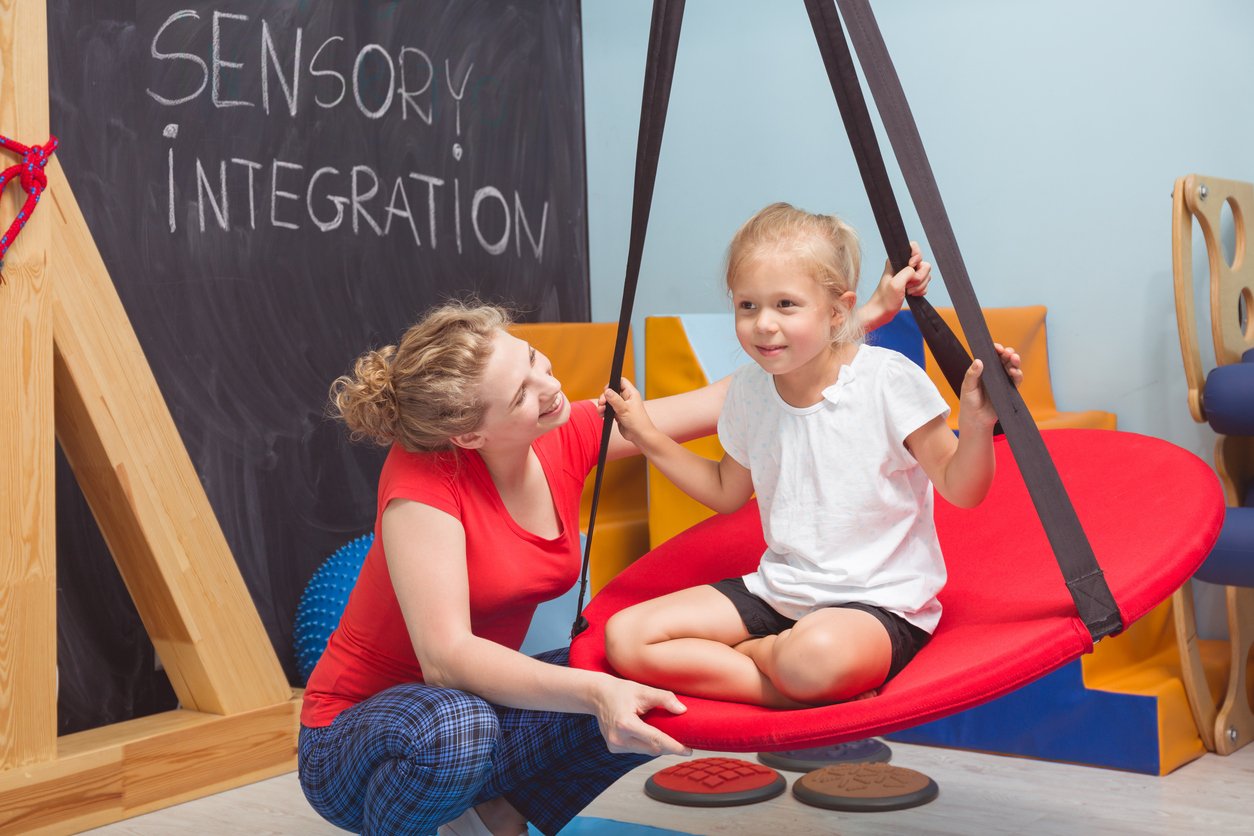Sensory System Series: Vestibular System
Do you get dizzy from spinning, experience sea sickness or car sickness? I once was able to ride roller coasters and spin in the teacups at Disney world, but not no more! Our vestibular system becomes out of whack when we experience these symptoms. The vestibular system is our sense responsible for providing information to our brains about where our body is in space. Basically, it is our sense of movement.
Information about motion, head position, and spatial orientation are sent to the brain to be interpreted allowing us to keep our balance, maintain an upright position, and keep our head still when our body is moving. Organs within the inner ear control this system. Semicircular canals are tiny fluid-filled tubes that help you stay balanced. Head movement causes the fluid to move over hairs in the canals creating a sensory nerve message. Some receptors in our ear receive information about our head and body movement in space while others receive information about speed and direction. While head movements cause fluid to move over hair cells, gravity is essential to what stimulates the inner ear receptors. Information about gravity allows us to keep upright, sense motion to move smoothly, and to detect threatening movements to respond quickly. Think about a time you stepped wrong and lost your balance, but quickly reacted to regain balance before you fell by extending your arms or legs. The vestibular system has a defensive component of reflexes to protect us. As we develop, the reflexes become integrated for a natural response against gravity.
The sensory messages generated when the inner ear is stimulated and are sent to the central nervous system through the vestibular nerve. The brain processes the information for our body to move smoothly and efficiently. This sense informs us if we are moving, standing still or objects in our environment are moving relative to our body.
There are 5 types of vestibular input:
Linear- front to back, side to side, up and down
Rotary- body spinning
Orbital- spending and moving around an axis (tilt a world or tea cup ride)
Inversion- tilting head back or upside down
Side Lying- head on its side and moving
A child with sensory processing disorder may have challenges with processing vestibular input. Their vestibular system may be over-responsive (hypersensitive) or under-responsive (hyposensitive). Over-responsivity means one has a larger than expected emotional or behavioral response to sensory input. It takes little input to produce a sensation. Vestibular over-responsivity indicates a child’s body has difficulty regulating movement sensations and is overloaded. There are two types of this: intolerance to movement and gravitational security. A child with intolerance to movement greatly dislikes rotary or linear movements, such as spinning, riding in a car, or moving too quickly. Gravitational security is feeling confident when our body is moving, therefore gravitational insecurity is excessive fear of movement where they don’t feel secure by gravity. Children who have this react negatively when their body is moving because they feel like they are falling. They dislike spinning, being picked up, or jumping.
On the other hand, a child may be under-responsive where the child has low arousal where they don’t notice the sensory input and it takes a lot of input to produce a sensation. They may also seek intensive sensory input. A child may not be able to respond quickly to protect themselves when they lose balance. Those who seek more sensory input seem like they can’t get enough movement and like to move against gravity, such as hanging upside down or climbing on everything.
Therapeutic Tool Highlight: Glider Swing
A platform swing provides flexible seating including laying down or sitting with 360 rotation to engage in linear movement for calming or rotary movement for excitement. Platform swing can be self-propelled or provide social engagement.
The above strategies are only a few and may or may not help. Let us know and we’d be happy to provide you with more. We are here to support you!
Check out our sensory system handouts you can purchase individually or as a bundle on our website! A great resource to learn about sensory processing disorder and each of our sensory systems. BONUS: print them off and hang them on the wall for all who pass by to view and learn or share with family, friends or teachers for them to have insight into your child’s sensory system.




